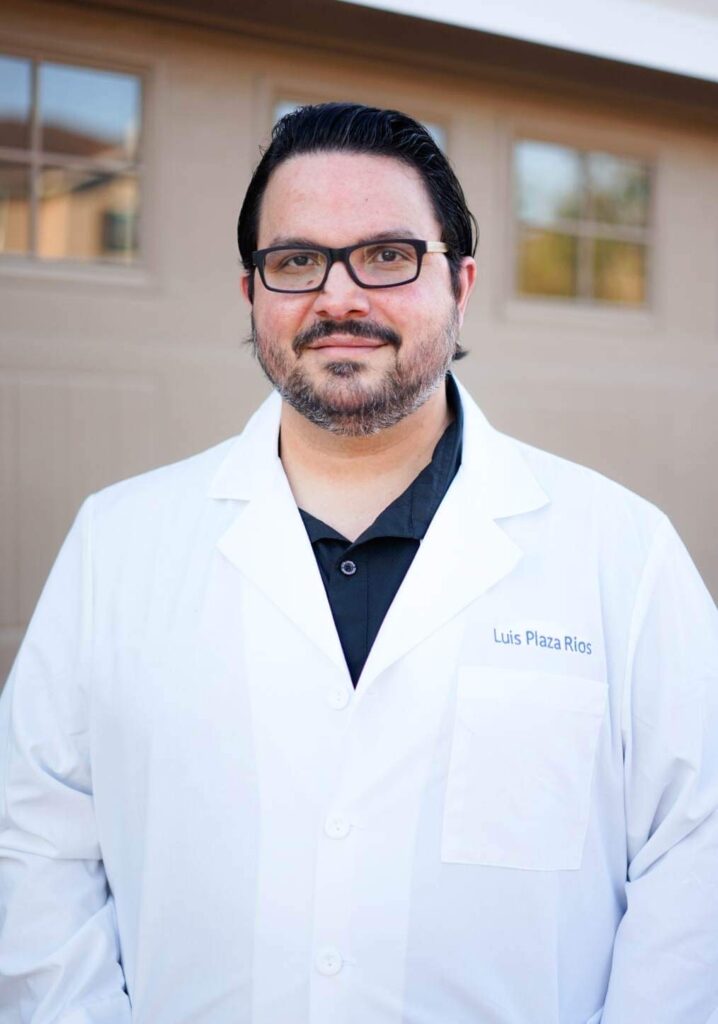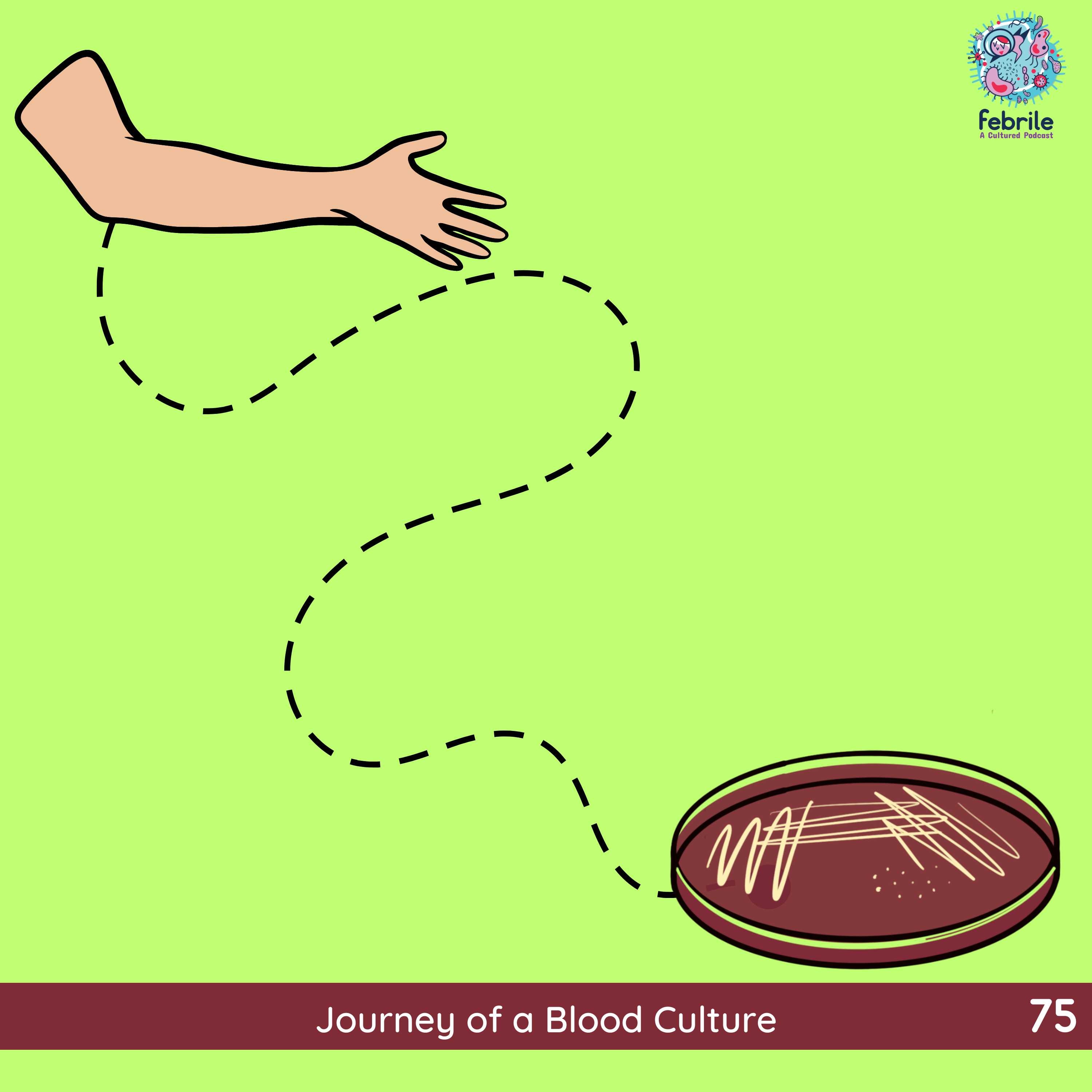Table of Contents
Credits
Host: Sara Dong
Guest: Luis Plaza
Writing/Producing/Editing/Cover Art/Infographics: Sara Dong
Our Guests
Luis Plaza

Luis Plaza is a Senior Medical Laboratory Scientist in Microbiology at Advent Health in Orlando, Florida. He is the creator and host of Let’s Talk Micro, a podcast about clinical microbiology explained in simple terms. Related to this episode, Luis recommended some Let’s Talk Micro episodes to check out:
- Episode 4- Blood Culture gram stains- https://rss.com/podcasts/letstalkmicro/216674/
- Episode 24- MALDI-TOF part.1 – https://rss.com/podcasts/letstalkmicro/320756/
- Episode 25 – MALDI-TOF part 2- https://rss.com/podcasts/letstalkmicro/324022/
- Episode 81- Discrepancies between genotypic and phenotypic testing in Microbiology pt.1 – https://rss.com/podcasts/letstalkmicro/868820/
- Episode 82- Discrepancies between genotypic and phenotypic testing in Microbiology pt.2- https://rss.com/podcasts/letstalkmicro/877637/
Culture
Luis shared that he was a big Harry Potter fan and a recent opportunity to visit the filming studio in London
Consult Notes
Key Points
I wanted to create an episode on what you need to know about blood cultures, an essential ID test! What is the journey from a patient’s vein to the lab to the result you finally see in the computer.
Collection of blood cultures
- Proper skin preparation/disinfection is essential to prevent contaminated blood cultures
- Disinfect bottle tops with 70% isopropyl alcohol
- Disinfect phlebotomy site with chlorhexidine or 2% iodine tincture and allow disinfectant to dry (IDSA guidance for adults and children > 2 months old)
- One blood culture set = one aerobic bottle and one anaerobic bottle (from one draw)
- Even if anaerobes are low on differential, an anaerobic bottle should ideally still be collected → Most bacteria grow faster in the anaerobic bottle
- Collect >=2 sets from separate sites if possible before administration of antibiotics
- Collect up to 3 blood cultures per day if intermittent bacteremia is suspected (such as undrained abscess, endocarditis, etc)
- Consensus guidelines and expert panels recommend peripheral venipuncture as preferred technique for obtaining blood culture (as less likely to be contaminated than draw from intravascular catheter or other device). Contaminants typically originate from the skin and can be common, but contaminant rates should not exceed 3% in IDSA guidance. Luis discussed how contamination rates are monitored in the lab
- Products that allow diversion and discard of the first few mL of blood can decrease contamination rates but add cost
- Rupp ME, Cavalieri RJ, Marolf C, Lyden E. Reduction in Blood Culture Contamination Through Use of Initial Specimen Diversion Device. Clin Infect Dis. 2017;65(2):201-205. doi:10.1093/cid/cix304
- McAdam AJ. Reducing Contamination of Blood Cultures: Consider Costs and Clinical Benefits. Clin Infect Dis. 2017;65(2):206-207. doi:10.1093/cid/cix306
- Blood can be collected with needle and syringe or directly into culture bottles with collection system
- If needle/syringe used, needle need not be changed between collection and inoculation of blood culture system (poses unnecessary risk of needlestick injury and does not reduce contamination rates)
- We won’t get into specifics for catheter-associated bacteremia >> check out prior episode #60
- Bacteremia can be missed by drawing too little blood. Volume is the most important factor for a successful blood culture. Volume of blood collected, not timing, is most critical
- Most septic patients have 1-5 cfu/ml in their blood (but usually probably <1)
- Adults: 20-30 mL should be collected per set (10 mL per bottle)
- Collect and distribute into several bottles
- Although concept of spacing blood culture draws has been commonly practiced, there is little evidence supporting the need for this (separation of blood culture draws over time should not be standard for routine collection)
- Pediatrics: Weight-based and age-based guidelines exist
- Weight-based guidelines recommend collecting 1-4% of patient’s total blood volume
- If pediatric bottles are used, a maximum of 5mL can be added to each bottle
- Miller JM, Binnicker MJ, Campbell S, et al. A Guide to Utilization of the Microbiology Laboratory for Diagnosis of Infectious Diseases: 2018 Update by the Infectious Diseases Society of America and the American Society for Microbiology. Clin Infect Dis. 2018;67(6):e1-e94. doi:10.1093/cid/ciy381
- CLSI Principles and procedures for blood cultures (M47), last updated 2022 – not one of the free CLSI handbooks but just ask your microbiology lab, who may have a copy
Initial blood culture bottle processing in the microbiology lab
- Current blood culture systems include commercial purpose-specific blood culture bottles that are incubated on specifically configured instruments that are fully automated from the moment that the blood culture bottles are loaded until the bottles signal positive
- Luis spoke briefly about BacT/Alert (bioMerieux) and BD BACTEC FX
- Bottles should be loaded onto the blood culture instrument within 2 hrs of collection
- The machine can scan an included barcode and tell what type of bottle (such as aerobic, anaerobic, pediatric)
- The instrument then monitors bottles for microbial growth every 10-24 minutes x 5 days
- There are variety of blood culture bottle types available for these systems >> aerobic and anaerobic bottles; bottles configured for children; fungal and mycobacterial bottle
- Resin-supplemented bottles are designed to bind and remove antibiotics (and therefore improve recovery of bacteria in patients who have been treated with antibiotics). There are resins designed to inactivate antibiotics that may be helpful for patients who have received antibiotics, but instead, avoidance of giving antibiotics before would be ideal!
- Typically blood culture are incubated for 5 days, although most are positive within 48 hrs if they will be positive. We discussed that historical teaching suggested that HACEK and other organisms like Abiotrophia and Granulicatella needed special blood culture produced – but these should be readily isolated in current blood cultures routinely.
- Incubation beyond 5 days is seldom required, but an example of need for longer incubation time would be for Brucella
Remember that fungal and mycobacterial blood cultures have a specific purpose!
- Fungal isolator cultures with prolonged incubation are used for recovery of dimorphic fungi, molds, mycobacteria, Nocardia (although might grow in routine) >> NOT FOR CANDIDA, which grow in standard blood culture bottles
Of note, sending these additional cultures is also labor intensive for the lab team and has high rates of contamination.
The blood culture machine “flags” positive!
- Blood cultures “flag” as positive due to colorimetric or fluorometric reaction
- The bottle is then removed and a Gram stain is performed
- The sample is placed in media at this time as well, typically blood agar, chocolate, and MacConkey plates
- In the meantime, there are some techniques can be used to rapidly test positive blood culture bottles to determine the organisms present (and in some cases susceptibility)
- Direct testing of positive blood culture bottles by MALDI-TOF mass spectrometry after short-term subculture plate incubation (ie 2-6 hrs) of high inoculum subcultures on solid media >> adopted by many labs, cost-effective approach to rapid organism identification
- There are also multiplex assays approved by FDA that simultaneous detect a panel of microorganisms as well as select resistance genes directly from positive blood culture bottles
- FilmArray Blood CUlture Identification panel (BioFire Diagnostics, Salt Lake City, UT)- Easy setup. All the targets are in one test (GP, GN, yeast) Now with the second version it detects more resistance genes.
- Nanosphere Verigene Gram-Positive and Gram-Negative blood culture tests (Luminex, Northbook, IL)- Multiple component for setup. Separate test cartridge for GN and GP
- Accelerate Pheno system (Accelerate Diagnostics, Tucson AZ) is automated system that uses gel electrofiltration and fluorescence in situ hybridization for limited number of bacteria and yeast. Provides MIC values by analyzing bacterial growth in presence of antibiotics using automated microscopy and tie lapse imaging
- Eplex from GenMark- Easy set up. Separate test cassette for GP, GN, and Fungal. The fungal cartridge detects Fusarium and Rhodotorula
- Given costs of these multiplex molecular assays, numerous studies have assess economic and clinical effects, but these generally demonstrate decrease in time to optimization of antimicrobial therapy; inconclusive in terms of impact on mortality and length of stays
- Banerjee R, Teng CB, Cunningham SA, et al. Randomized Trial of Rapid Multiplex Polymerase Chain Reaction-Based Blood Culture Identification and Susceptibility Testing. Clin Infect Dis. 2015;61(7):1071-1080. doi:10.1093/cid/civ447
Interpretation is a bigger discussion that we didn’t cover in this episode, but just a few quick notes:
- Check out this prior graphic on common blood culture contaminants
- Possible false-negative blood cultures can occur with:
- Too little volume collected
- Administration of antimicrobials beforehand
- Organisms that will not grow in standard blood culture bottles (eg. Bartonella, etc)
Additional reference:
- Mandell Chapter 16 The Clinician and the Microbiology Laboratory
Infographics
Goal
Listeners will be able to describe the journey of a clinical blood culture from collection to result.
Learning Objectives
After listening to this episode, listeners will be able to:
- Describe best practices in blood culture collection
- Discuss the initial processing of a blood culture bottle in the microbiology lab
Disclosures
Our guest (Luis Plaza) as well as Febrile podcast and hosts report no relevant financial disclosures
Citation
Plaza, L., Dong, S. “#75: Journey of a Blood Culture”. Febrile: A Cultured Podcast. https://player.captivate.fm/episode/dc87bbf7-ae8c-45c0-81db-cc6867800846


